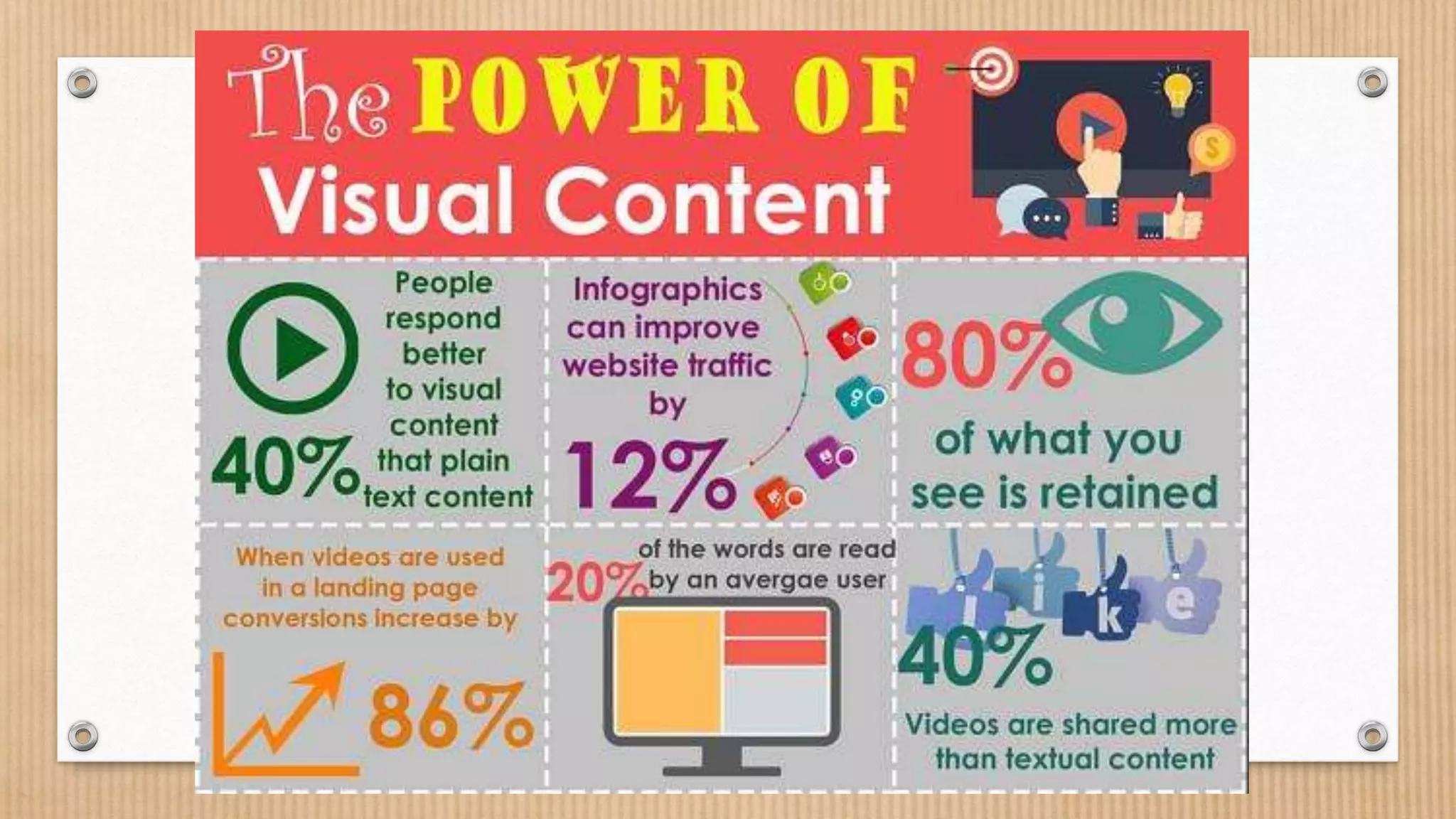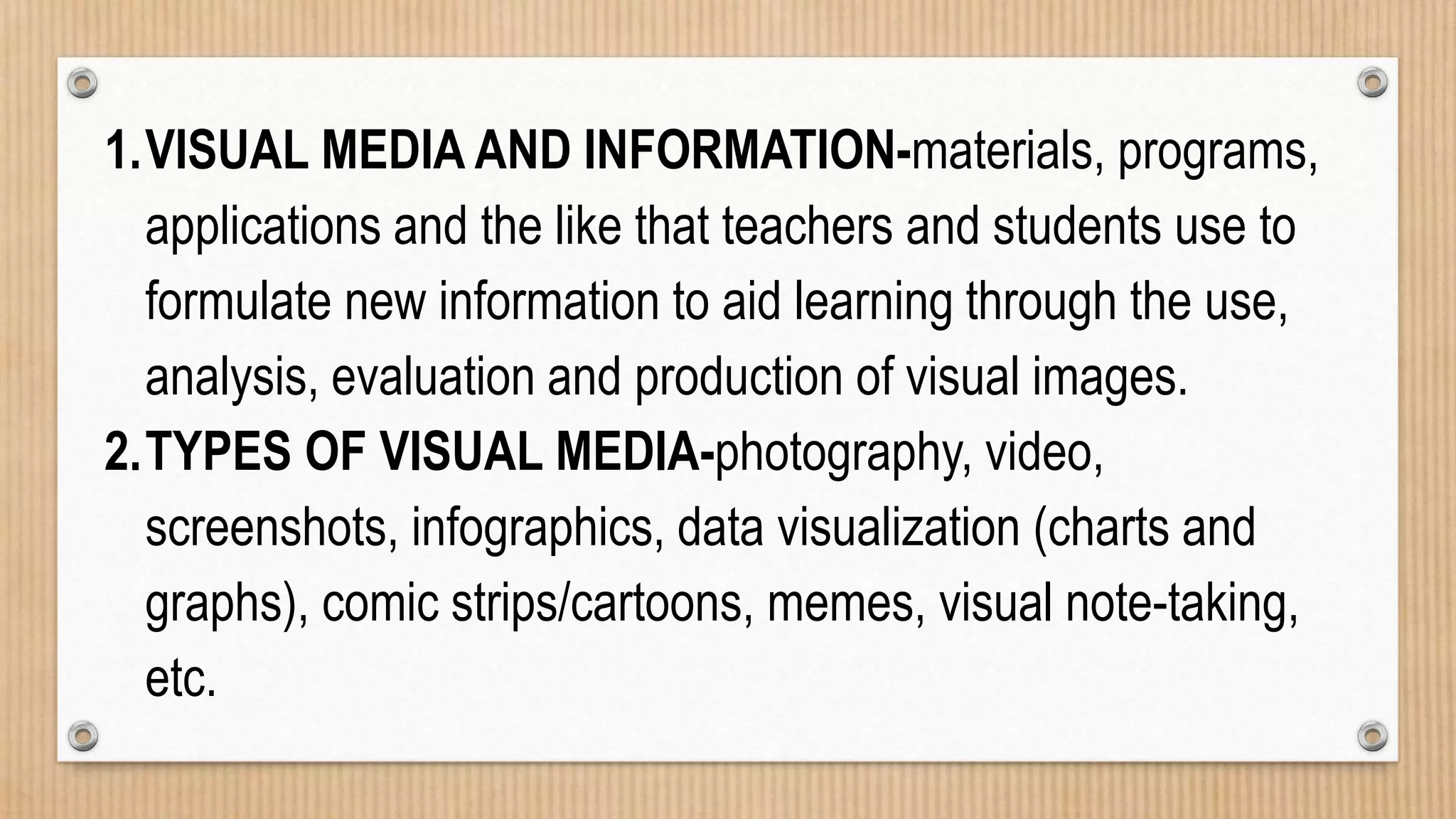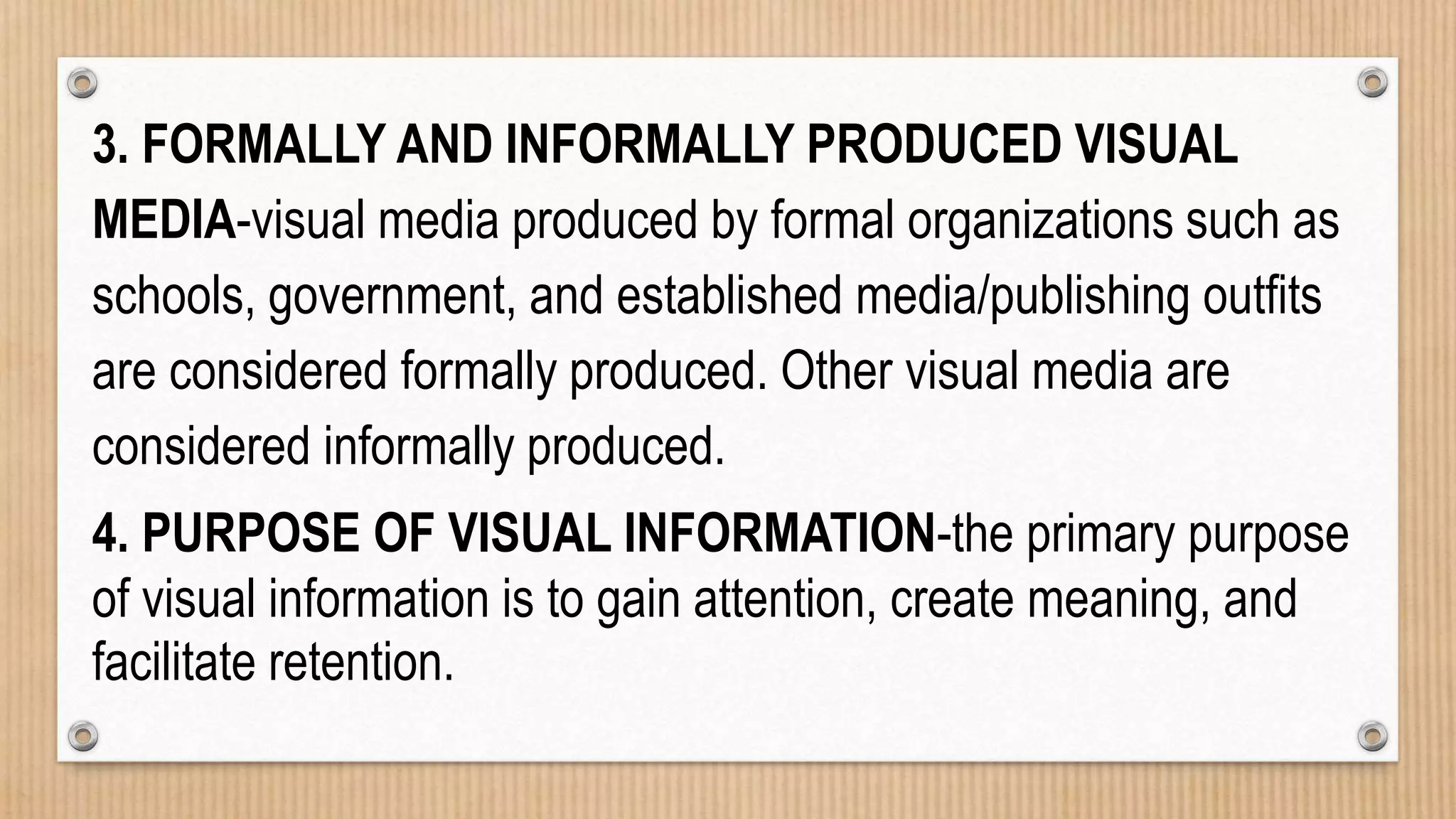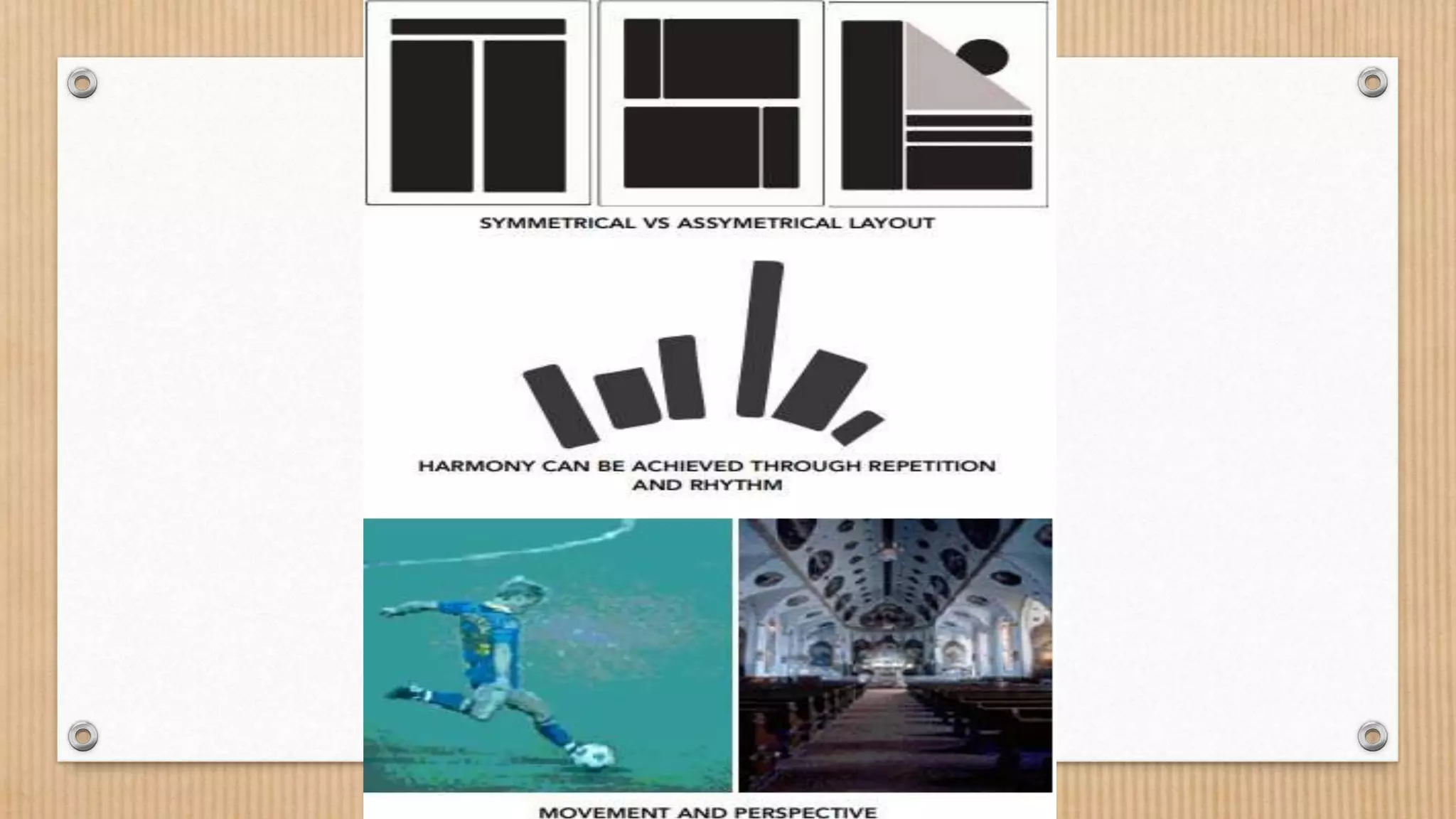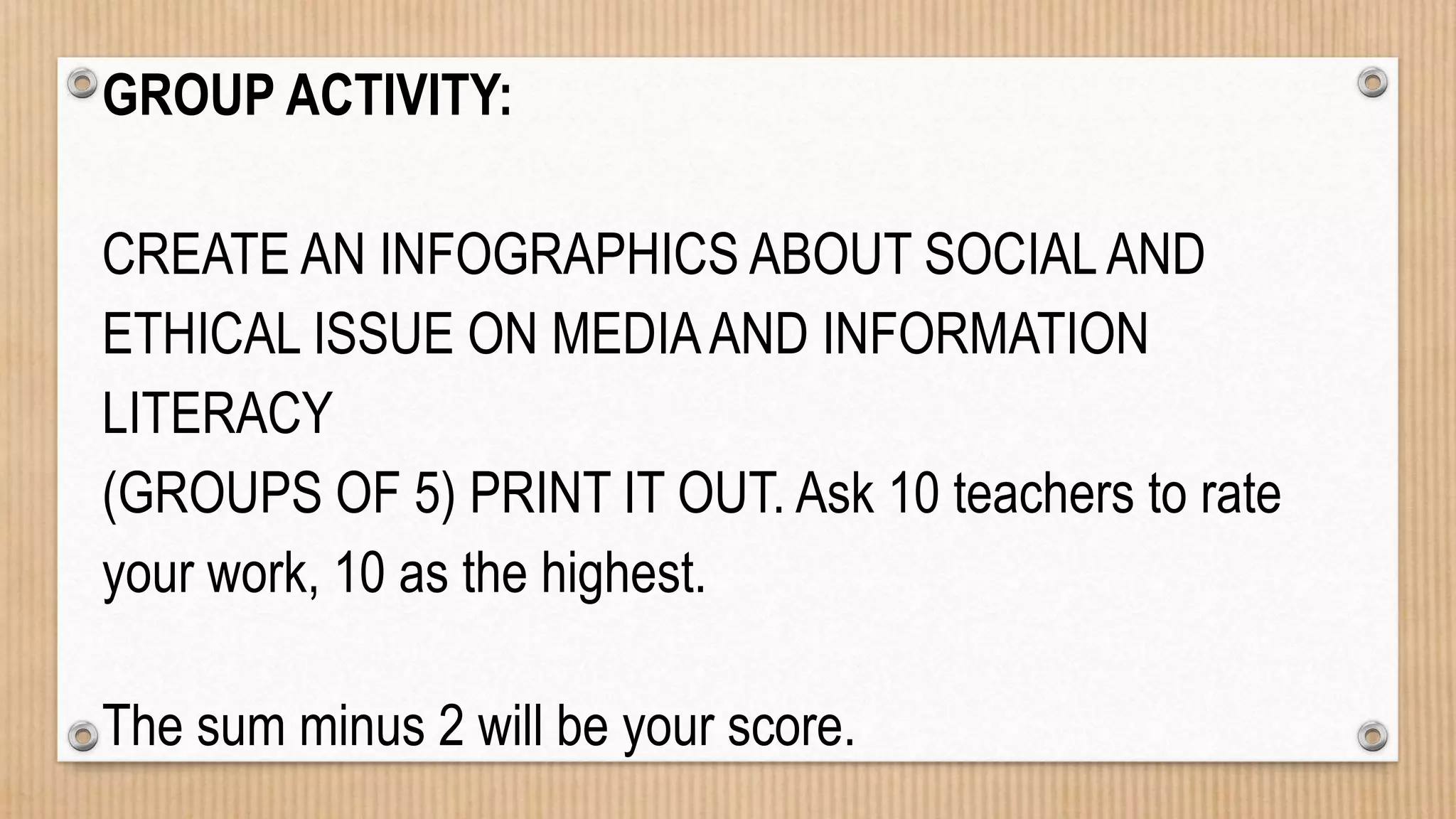The document discusses the importance of visual content and media. It states that 40% of people respond better to visual information than text alone. Publishers using infographics grow traffic by 12% on average compared to those without. The document also outlines various types of visual media like photos, videos, and infographics. It describes how visual elements like line, shape, color are used in visual design and principles such as balance and rhythm to direct attention. Overall it emphasizes that visual content is important for gaining attention, facilitating understanding and retention of information.

